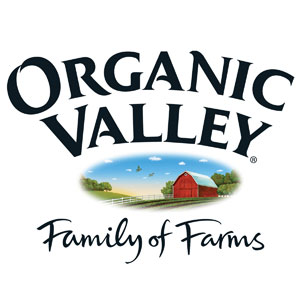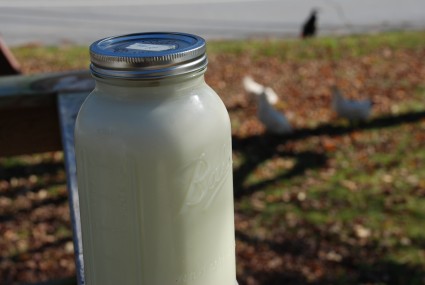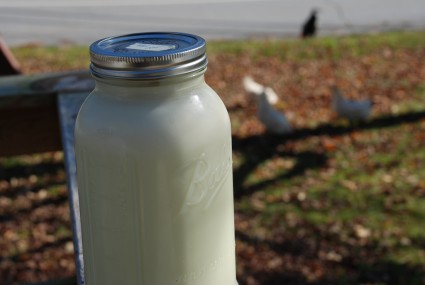 Organic Valley started up in 1988 with a vision of being a different kind of milk cooperative, one that helped save small family dairies via promoting organic dairy products.
Organic Valley started up in 1988 with a vision of being a different kind of milk cooperative, one that helped save small family dairies via promoting organic dairy products.
“It was an idealistic, mission-oriented place in those days, spreading the gospel about the benefits of organic dairy and founded on the premise of economic-justice for farmers,” recalls Mark Kastel, who served as a consultant to Organic Valley a year after it launched. (He’s currently head of the Cornucopia Institute, a watchdog organization that monitors dairy compliance with organic standards.)
That idealism and Americans’ insatiable appetite for organic food helped propel Organic Valley onto a rapid growth path. Today it has more than 1,600 dairies and upwards of $500 million in annual sales, along with a premier brand in the organic-food marketplace with its line of milk, butter, yogurt, and cheese.
Unfortunately, at least some of the idealism has vanished, thanks to a bitter year-long struggle among the farmers about whether the co-op should allow its dairies to sell or distribute unpasteurized, or “raw,” milk on the side.
Last week, the board voted four to three to prohibit its member dairies from selling raw milk. “It’s not a fun issue here,” says George Siemon, the CEO. “Everyone on the board drinks raw milk.” It’s been the most bitter dispute in the enterprise’s 22-year history, he says.
The decision threatens to tear Organic Valley apart, or at least hamper its business effectiveness, by raising two major risks.
First, Organic Valley could lose a significant number of its dairy members. No one knows how many of its dairies sell raw milk, but 10% seems a conservative estimate, according to co-op insiders. That means 150 or 200 dairies, minimum, are selling raw milk. For those dairies, the business challenge is that raw milk fetches between $5 and $10 a gallon, while Organic Valley and other co-ops typically pay in the vicinity of $1.50 per gallon for bulk milk that then goes to pasteurization. But because most of the raw dairies are far from urban centers, where demand for raw milk is greatest, and are limited in most large states like Pennsylvania, New York, and Massachusetts to selling direct from the farm, it’s difficult to sell all their milk unpasteurized.
With Organic Valley having taken its anti-raw-milk stand, those dairies have to choose between selling all their milk to the co-op, or complete a transition of selling all their milk directly to consumers, unpasteurized.
 Interestingly, it was the dual business life being lived by growing numbers of its members — in response to growing demand for raw milk — that precipitated the crisis. “It came to our attention because of farmers [complaining],” says Travis Forgues, a Vermont dairy farmer and a member of the board who voted to boot dairies that persist in selling some of their milk unpasteurized. “Raw milk sales for some of [the members] became a major part of their business. This did not sit well with some farmers…You have farmers selling milk against us.”
Interestingly, it was the dual business life being lived by growing numbers of its members — in response to growing demand for raw milk — that precipitated the crisis. “It came to our attention because of farmers [complaining],” says Travis Forgues, a Vermont dairy farmer and a member of the board who voted to boot dairies that persist in selling some of their milk unpasteurized. “Raw milk sales for some of [the members] became a major part of their business. This did not sit well with some farmers…You have farmers selling milk against us.”
Still, the debate over how to handle the situation has been highly emotional within the co-op. It has established no fewer than four special committees to consider the subject over the last year, and a couple weeks ago, its Dairy Executive Committee divided 20 in favor and 20 against prohibiting members from selling raw milk. The board of directors then decided the matter with its narrow vote.
A second concern is that Organic Valley’s anti-raw-milk stance could alienate significant numbers of consumers. Organic Valley has many loyal customers among the raw milk crowd, some of whom buy the co-op’s yogurt or cheeses in addition to drinking raw milk.
The Weston A. Price Foundation, which aggressively promotes raw milk consumption, recommends Organic Valley butter as a good alternative to members who don’t have access to raw butter. And the organization promoted the fact that it served Organic Valley sour cream to its 8,000-plus attendees at its annual conference last November. (Grist just ran a taste test that included Organic Valley’s ultra-pasteurized line and a New England’s raw version, with surprising results.)
“Some members are concerned” about the PR fallout, says Forgues. He says he’s more concerned about possible legal problems that could occur if an Organic Valley member’s raw milk makes someone sick, though there’s no evidence that there is a potentially serious legal issue, since Organic Valley has no role in producing or selling a member’s raw milk.
Siemon, the CEO, who is charged with coming up with an “implementation plan” for ridding the co-op of raw milk sellers, says the co-op wants to be “compassionate.” He expects at least a six-month hiatus before the new policy is fully implemented.
But when it is, it will place Organic Valley up there with a small but growing number of co-ops and processors similarly implementing prohibitions against raw milk sales among suppliers.
Forgues, the Organic Valley board member, argues vehemently that the co-op’s decision has nothing to do with concerns about competitive inroads being made by raw milk. “That has zero to do with what we are doing,” he says. “This is not an ag corporate decision.”
Maybe not for Organic Valley, but it unfortunately fits into an expanding pattern of pushback by some states and Big Ag. For example, Wisconsin’s governor just vetoed a bill that would reversed the state’s ban on raw milk sales by allowing limited direct sales from farms. His veto came after both houses of the legislature passed the bill by overwhelming majorities.
The issue of raw milk isn’t fading, unfortunately, It continues to arouse all kinds of strong emotions as demand inexorably expands. Organic Valley may or may not be a part of Big Ag, but its decision is certain to add a new emotional, and economic, overlay to the issue. It’s too bad farmer has to be pitted against farmer.


